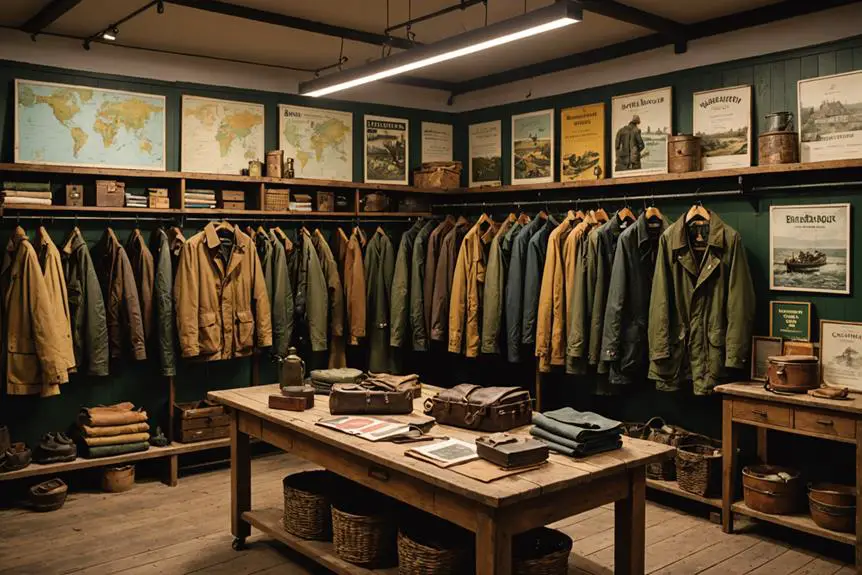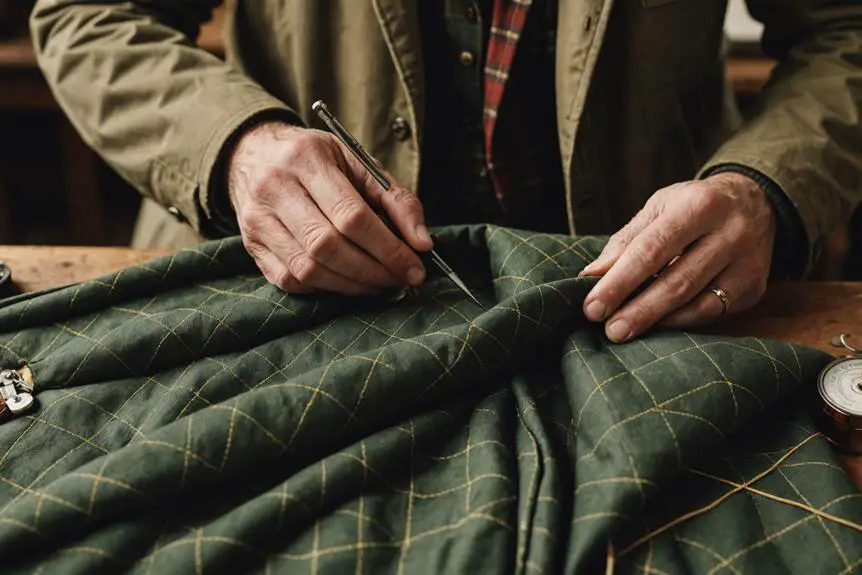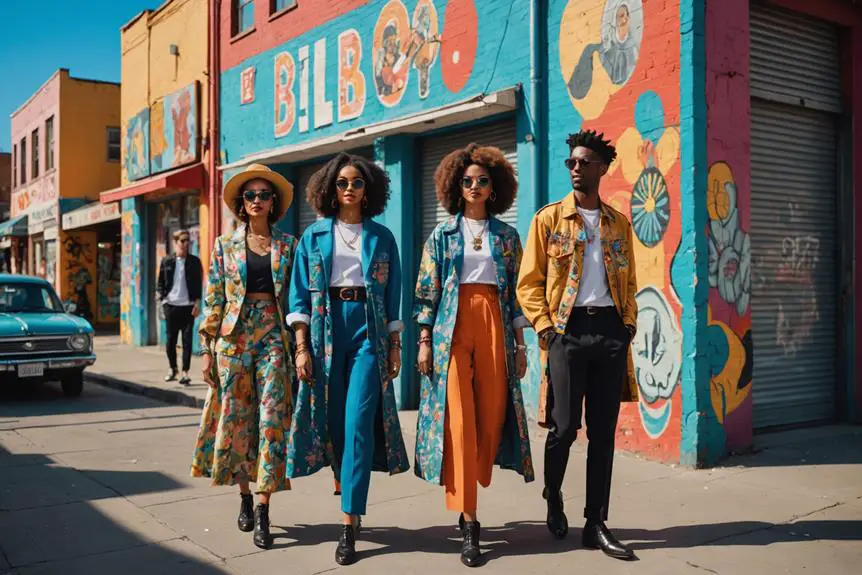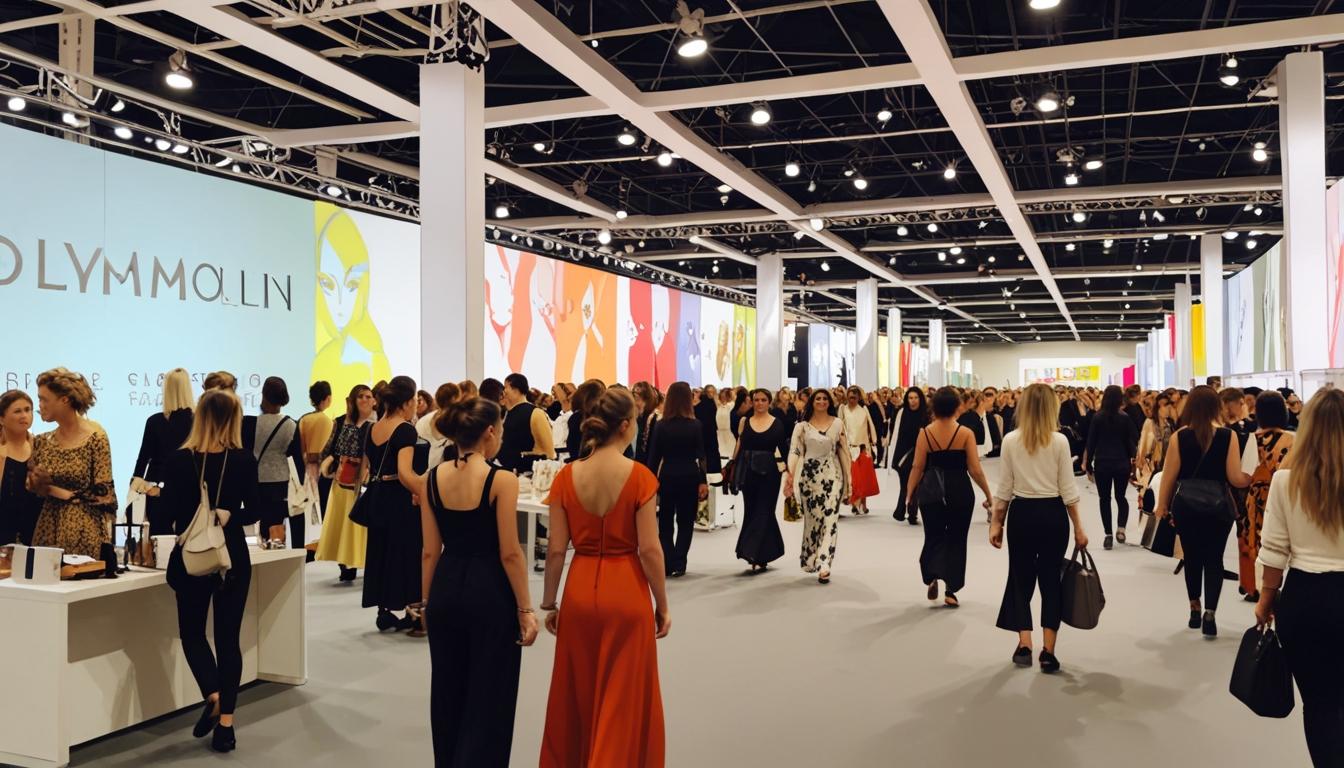Barbour's history is a fascinating journey that spans over a century, beginning in 1894 when John Barbour founded the brand in South Shields, England. Originally focused on the importation of oil-cloth, Barbour quickly pivoted to producing waterproof clothing to meet growing consumer demand. By the 1920s, the brand became renowned for its iconic waxed cotton jackets, celebrated for their durability and functionality. The prestigious royal warrants awarded in the 1970s and '80s further solidified Barbour's reputation, intertwining the brand with British heritage and tradition. Today, Barbour continues to lead in the fashion industry by innovating while prioritizing sustainability. The legacy of craftsmanship remains robust, with many of the original designs still being produced. For those interested in their current projects and initiatives, there are always more captivating details to discover.
Founding and Early Years

Barbour's journey began in 1894, when John Barbour established the company in South Shields, England, initially focusing on importing oil-cloth. This strategic decision laid the foundation for what would become a renowned outdoor clothing brand. As the early 1900s progressed, Barbour recognized the growing demand for functional waterproof wear, leading to a pivotal shift from oil-cloth importing to clothing production.
By the 1920s, the company introduced its signature waxed cotton jackets, which quickly gained a reputation for their durability and functionality, appealing to outdoor enthusiasts and professionals alike. This innovation distinguished Barbour in a competitive market, aligning with the needs of consumers seeking reliable gear.
In 1912, the brand officially became J Barbour & Sons Ltd, marking a significant moment in its corporate identity. By 1917, the company's initial mail order catalogue accounted for a remarkable 75% of its business, showcasing its early focus on direct-to-consumer sales. This approach not only enhanced customer engagement but also established a direct link between Barbour and its growing base of loyal customers. Through these early years, Barbour set the stage for its enduring legacy in outdoor apparel.
Royal Recognition
Throughout its history, Barbour has earned prestigious recognition from the British royal family, underscoring its status as a hallmark of quality in outdoor apparel. The journey began in 1974 when Barbour received its first Royal Warrant from HRH the Duke of Edinburgh, marking its entry as a trusted supplier to the royal family. This acknowledgment not only elevated the brand's profile but also aligned it with the values of British heritage. Similar to other iconic brands, Barbour's evolution reflects its commitment to craftsmanship and quality, akin to Burberry's historical dedication to outdoor attire and innovation in fabric technology, including vintage clothing identification.
In 1982, Her Majesty the Queen awarded Barbour a second Royal Warrant, further solidifying its reputation in the competitive landscape of British fashion. By 1987, HRH the Prince of Wales recognized Barbour's continued excellence in craftsmanship with a third Royal Warrant, affirming the brand's commitment to quality.
Moreover, Dame Margaret Barbour's contributions were celebrated when she was made a Commander of the Order of the British Empire in 1991, and later appointed Dame Commander in 2001. Her efforts greatly enhanced Barbour's legacy, intertwining the brand's identity with the royal family's appreciation for fine craftsmanship and enduring quality. This royal recognition not only validates Barbour's standing but also reinforces its role in the narrative of British heritage.
Brand Expansion

Over the years, Barbour has strategically expanded its retail presence across more than 55 countries, markedly elevating its global footprint in the outdoor apparel market. This growth aligns with Barbour's commitment to maintaining its outdoor heritage while embracing modern trends. The brand's expansion is characterized by a series of key collaborations and initiatives that enhance its appeal.
- In 2014, Barbour partnered with Land Rover, merging outdoor heritage with a clothing collection that resonated with adventure enthusiasts.
- The brand's debut at London Fashion Week Mens in 2015 showcased its evolution towards a more fashion-forward identity.
- In 2019, Barbour collaborated with actress Alexa Chung to create a women's collection that modernized classic styles, attracting a younger demographic.
- The launch of the Barbour Re-Loved program in 2019 emphasizes sustainability, focusing on repairing and reselling jackets to extend product lifecycles.
- This strategic blend of collaborations and sustainability initiatives positions Barbour not just as a retail brand, but as a leader in responsible outdoor fashion.
Through these efforts, Barbour effectively balances its rich history with contemporary market demands, ensuring continued relevance and growth.
Recent Innovations
As Barbour continues to navigate the modern landscape of outdoor apparel, recent innovations reflect its adaptability and commitment to sustainability. In response to the COVID-19 pandemic, Barbour's factory produced 50,000 PPE gowns for the NHS in 2020, demonstrating the brand's quick pivot during a crisis. This ability to innovate was further recognized when Barbour won Mens Footwear Brand of the Year at the Drapers Footwear Awards the same year, underscoring its expansion into new markets.
The Earth Project, a collaboration with Selfridges, highlights Barbour's dedication to sustainability. This initiative included a customized electric Defender display, reinforcing the brand's eco-conscious ethos. Additionally, the introduction of the Wax for Life station in Selfridges allows customers to have their jackets rewaxed, promoting longevity and maintenance of their clothing.
Barbour's Re-Loved program, initiated in 2019, encourages the repair and resale of jackets, aligning with sustainable fashion practices. As a family-owned business, Barbour's recent innovations not only enhance its product offerings but also solidify its role as a responsible leader in outdoor apparel, merging tradition with a forward-thinking approach to sustainability.
Legacy and Craftsmanship

Barbour's legacy of craftsmanship is undeniably rich, with its roots tracing back to 1894 when the company first began producing high-quality outerwear. This heritage is particularly embodied in the iconic Barbour jackets, crafted from durable waxed cotton. Each jacket represents a meticulous manufacturing process that requires around 36 skilled workers, ensuring that every stitch meets Barbour's high standards of quality. Their commitment to excellence is reflected in their vintage jacket features, showcasing unique craftsmanship and detailing that set them apart.
- Barbour jackets are integral to British country attire.
- The South Shields production facility can produce 130,000-140,000 garments annually.
- Each new garment is completed every three minutes.
- The Wax for Life initiative promotes sustainability by encouraging repairs and re-waxing.
- Many original designs remain in production, showcasing the brand's commitment to preserving craftsmanship traditions.
Frequently Asked Questions
Where Did Barbour Originate?
Barbour originated in South Shields, England, where John Barbour established the company in 1894. Its roots in this coastal town shaped the brand's identity, influencing its commitment to craftsmanship and weatherproof outdoor clothing.
Is Barbour British or Scottish?
You'll find Barbour is primarily considered a British brand, despite its Scottish founder. It's known for its strong ties to British heritage, particularly through its outdoor clothing and iconic waxed jackets celebrated across the UK.
What Is Special About Barbour?
Barbour's special because of its exceptional craftsmanship, iconic waxed jackets, commitment to sustainability, and royal endorsements. You'll appreciate the blend of tradition and innovation, making it a staple for both outdoor enthusiasts and fashion-forward individuals.
Why Is Barbour so Expensive?
Barbour's high prices stem from meticulous craftsmanship, premium materials, and sustainable practices. The brand's commitment to durability and exclusivity, along with limited editions and royal endorsements, further justifies the investment for discerning consumers like you.




